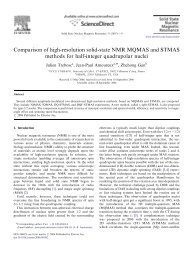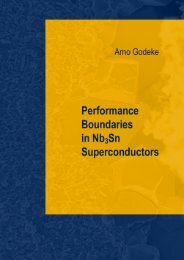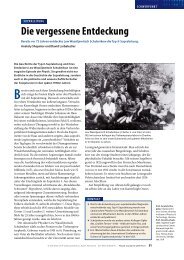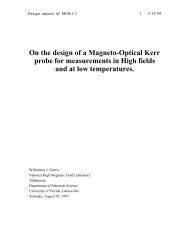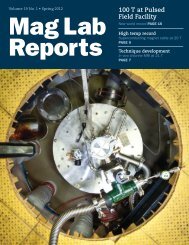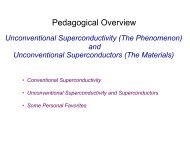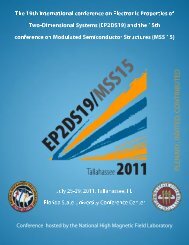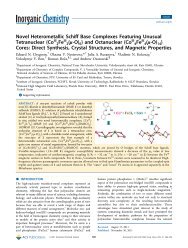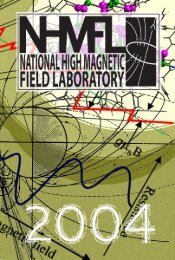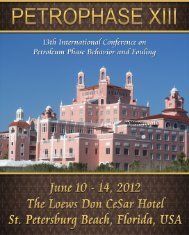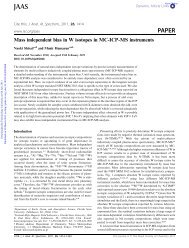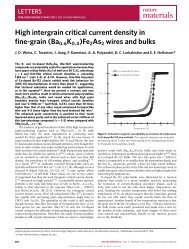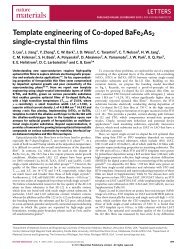Microscopes and Crystals - National High Magnetic Field Laboratory
Microscopes and Crystals - National High Magnetic Field Laboratory
Microscopes and Crystals - National High Magnetic Field Laboratory
Create successful ePaper yourself
Turn your PDF publications into a flip-book with our unique Google optimized e-Paper software.
ACTIVITY 14: MAKING CRYSTALS<br />
m6: <strong>Microscopes</strong> <strong>and</strong> <strong>Crystals</strong><br />
MATERIALS:<br />
! Tap water or distilled or filtered water<br />
! Slides<br />
! Baby food jars, clear film canisters, or other clear container<br />
! Copper sulfate (CuSO 4<br />
), Epsom salts, table salt, sugar or borax<br />
! Droppers or straws to dispense <strong>and</strong>/or stir solutions<br />
! Teaspoon (a teaspoon holds 5 ml of liquid)<br />
! <strong>Field</strong> <strong>Microscopes</strong><br />
! Science Notebooks<br />
WHAT WILL THE STUDENTS DO?<br />
The purpose of this activity is to provide students with the opportunity to make crystals using<br />
materials <strong>and</strong> instructions provided. This is a structured activity, <strong>and</strong> is intended to introduce<br />
students to crystal making. In Activity 15, students will extend this experience by investigating<br />
variables that affect crystal growth.<br />
Procedure:<br />
Students will make crystals using one or all of the solutes listed in the materials section.<br />
For example, if students are making a copper sulfate solution, they will follow these instructions.<br />
1. Place 10 ml (2 tsp.) of warm water in a jar, or other container.<br />
2. Add 7 g (1 tsp.) of copper sulfate to the water.<br />
3. Shake or stir until the copper sulfate is dissolved.<br />
4. Take a dropper, or a straw, <strong>and</strong> put one or two drops of the liquid in the center of a slide.<br />
5. Place the slide where it will not be disturbed.<br />
6. Students will examine the slide the next day. <strong>and</strong> record observations in their Science<br />
Notebooks. These may be in the form of written observations <strong>and</strong> drawings.<br />
EXTENSIONS:<br />
Art. Before photography was widely used, geologists, astronomers, naturalists <strong>and</strong><br />
other scientists used words <strong>and</strong> drawings to inform each other about their discoveries.<br />
Have students pretend they are geologists <strong>and</strong> have them draw pictures of crystals as carefully<br />
as they can, including all details. Then, encourage students to color the drawings. The more<br />
detail they have included, the more colors they can incorporate. Students can compare these<br />
drawings to the actual drawings of birefringent crystals in Activity 16.<br />
SCIENCE, OPTICS & YOU GUIDEBOOK<br />
- 129 -



